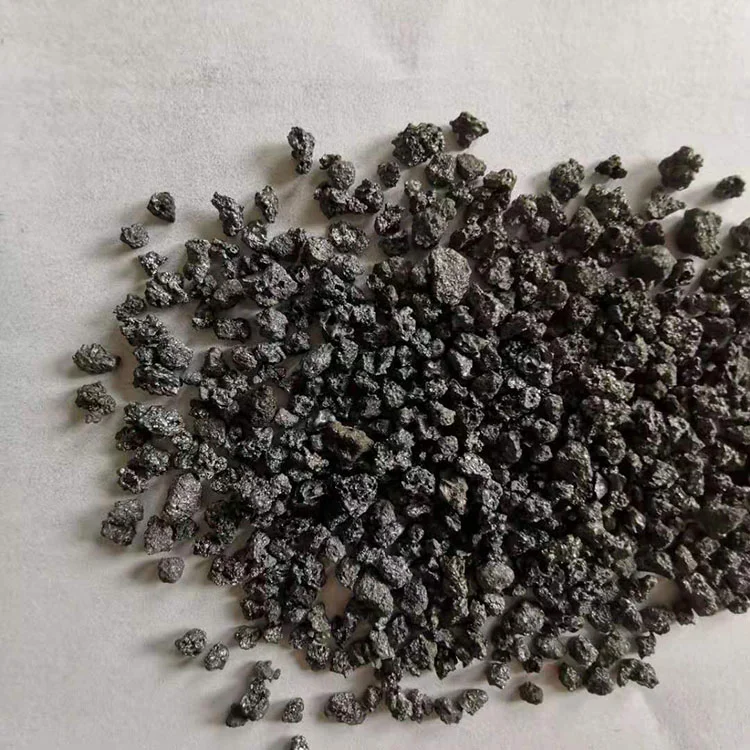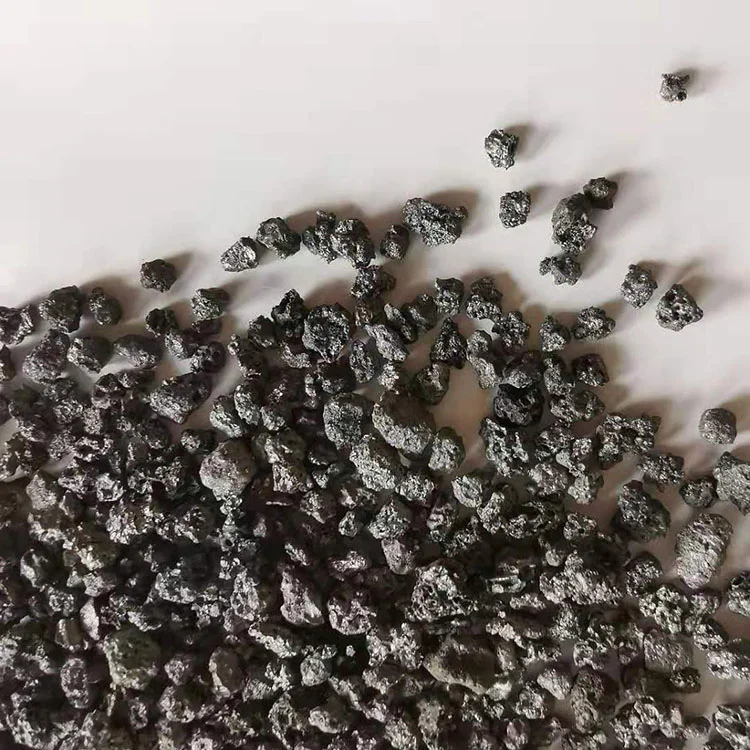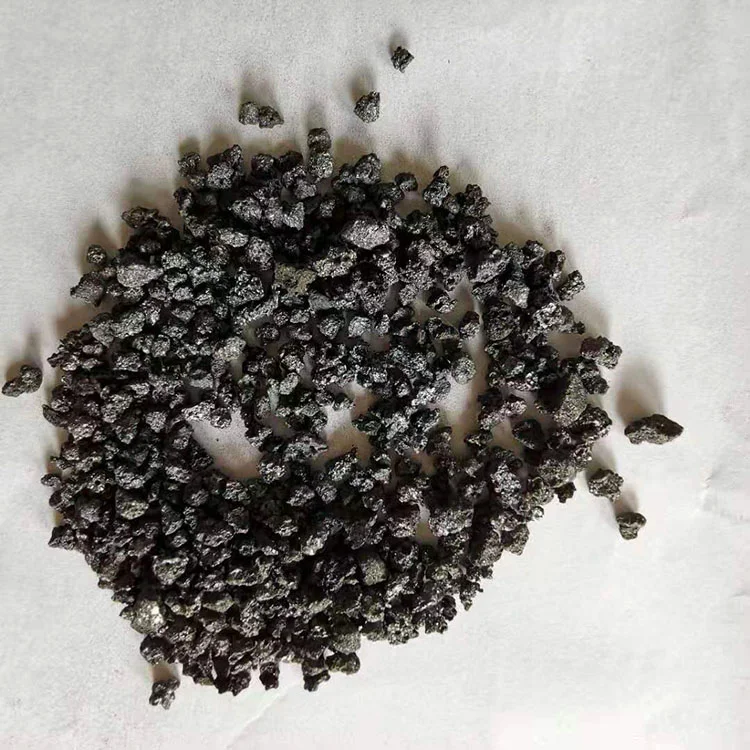- This topic is empty.
-
AuthorPosts
-
23/04/2024 at 15:39 #2938
<span style="font-size: 16px;">Discover the Types and Significance of Calcined Petroleum Coke</span> When it comes to understanding calcined petroleum coke, delving into its historical context can provide valuable insights. You might be surprised to learn that this carbonaceous material has been utilized for centuries, with its roots tracing back to ancient civilizations. Exploring the evolution of calcined petroleum coke over time can shed light on its significance in various industries today.
Types of Calcined Petroleum Coke
Anode Grade
Anode-grade calcined petroleum coke is a high-quality carbon material produced from calcining green petroleum coke. It is extensively used in the production of aluminum anodes for smelting processes. Anode-grade coke boasts low impurity levels, making it ideal for applications requiring high purity and electrical conductivity.
Fuel Grade
Fuel-grade calcined petroleum coke, on the other hand, is used as a fuel in various industries due to its high calorific value. Unlike anode-grade coke, fuel-grade coke has higher sulfur and metal content, making it suitable for heating purposes rather than metallurgical processes.
Significance in Industries
Calcined petroleum coke plays a crucial role in industries such as aluminum production, steelmaking, and the manufacturing of titanium dioxide. Its unique properties make it an essential raw material for various industrial processes, ensuring efficient and cost-effective operations.
Variations in Properties
The properties of calcined petroleum coke vary depending on its grade. Anode-grade coke typically has lower sulfur and metals content, superior electrical conductivity, and higher purity levels compared to fuel-grade coke. These differences dictate their respective applications across different industries.

Composition and Significance
Carbon Content
When calcined petroleum coke is produced, the carbon content significantly increases compared to raw petcoke. This enhancement in carbon content is a crucial aspect that improves the product's quality and suitability for various applications.
Low Sulfur Content
The low sulfur content in calcined petroleum coke is of utmost importance. It ensures that the final product meets stringent quality standards, especially in industries where sulfur emissions need to be minimized for environmental compliance.
Composition Changes
Throughout the calcination process, various composition changes occur. These alterations are essential as they impact the product's properties, such as reducing volatile matter and increasing carbon purity. The transformation during calcination plays a pivotal role in enhancing the material's value and utility across different markets.
Fuel-Grade Coke Explained
Characteristics
Fuel-grade coke, also known as grade coke, is distinguished by its high carbon content and low ash and sulfur levels. This type of coke is derived from the thermal cracking of petroleum feedstocks in a process called calcination.
Fuel-grade coke possesses excellent opportunity fuel characteristics due to its high calorific value and low impurity levels, making it an ideal choice for various industrial applications.
Primary Uses
In industrial settings, fuel-grade coke serves as a cost-effective alternative to traditional fuels like natural gas and crude oil. Its utilization extends across diverse sectors, including steel production, aluminum smelting, and power generation.
Fuel-grade coke plays a crucial role in the manufacturing of graphite electrodes, contributing to the production of high-quality steel and other metals. Moreover, it serves as a vital component in the cement industry for its energy-intensive processes.
Criteria for Suitability
Determining the suitability of green coke for fuel-grade applications involves assessing key parameters such as volatile matter content, sulfur levels, and ash composition. The cokes must undergo stringent quality control measures to ensure compliance with industry standards before being utilized as an efficient fuel source.

The Calcination Process
Rotary Kiln
In the calcination process, petroleum coke is fed into a rotary kiln where it is heated at high temperatures. This crucial step initiates the transformation from raw to calcined petroleum coke.
The intense heat in the rotary kiln causes the volatile matter within the petroleum coke to evaporate, leaving behind a purified form known as calcined coke. This process ensures that impurities are removed, resulting in a higher heating value.
Combustion and Temperature Control
During calcination, combustion plays a vital role in maintaining the required temperature levels. Through complete combustion, any remaining volatile materials are eliminated, leaving behind solid carbon with enhanced properties.
Control of the temperature and time duration during calcining is critical. The optimal combination ensures that the petroleum coke undergoes thorough heating without causing excessive loss of desirable properties.
Distillation and Unburned Carbon
As the petroleum coke goes through distillation in the rotary kiln, any unburned carbon is effectively burned off. This meticulous process guarantees that the final product, calcined petroleum coke, meets stringent quality standards.
Desulfurization Techniques
Gasification
When desulfurizing calcined petroleum coke, gasification is a common technique used to reduce sulfur content. By subjecting the material to high temperatures in a controlled environment, sulfur compounds are broken down and removed.
Fluorination
Fluorination is another effective method for reducing sulfur content in calcined petroleum coke. This process involves treating the material with fluorine-based compounds to eliminate sulfur impurities.
Heat Recovery
During the desulfurization process, heat recovery plays a crucial role in optimizing energy efficiency. By capturing and reusing heat generated during treatment, you can improve overall process sustainability.
Environmental Benefits
Implementing desulfurization techniques not only enhances the quality of calcined petroleum coke but also brings significant environmental benefits. By reducing sulfur emissions, these methods contribute to air quality improvement and environmental protection.

Handling and Storage Tips
Safe Handling Practices
When dealing with calcined petroleum coke (CPC), ensure to wear appropriate protective gear to prevent skin contact or inhalation. Avoid direct exposure to the material and handle it in a well-ventilated area.
To minimize the risk of accidents, always follow established safety protocols when working with CPC. In case of any spills or leaks, promptly clean up the area using recommended procedures to prevent environmental contamination.
Optimal Storage Conditions
When storing calcined petroleum coke, keep it in a dry and covered area away from direct sunlight and sources of ignition. Ensure that the storage location is well-ventilated to prevent the accumulation of volatile gases.
Maintaining proper storage conditions is crucial for preserving the quality of CPC. Store the material in designated containers or silos that are compatible with its properties to prevent degradation over time.
Risks of Improper Handling and Storage
Improper handling and storage of calcined petroleum coke can lead to safety hazards such as fire, explosions, and environmental pollution. Failure to follow safety guidelines may result in health risks for individuals exposed to the material.
Inadequate storage practices can also impact the quality of CPC, leading to potential issues during its use in various applications. It is essential to prioritize safety measures and adhere to recommended storage guidelines to mitigate risks effectively.
Health Hazards Awareness
Respiratory Concerns
When handling calcined petroleum coke, be cautious of the fine dust it produces. Exposure to this dust can lead to respiratory issues. Protect yourself with proper ventilation and masks.
Breathing in the waste particles from calcined petroleum coke can irritate your lungs and airways. The ash content in the dust may cause coughing, wheezing, or even more severe respiratory problems.
Protective Measures
Ensure that when working with calcined petroleum coke, you have adequate ventilation in place. Use masks or respirators to shield yourself from inhaling any harmful airborne particles.
Protective equipment such as gloves and goggles are essential to safeguard against skin irritation and eye damage caused by direct contact with the coke or its ash residue.
Environmental Impact Considerations
Emissions
When using calcined petroleum coke, be mindful of emissions. The production process can release harmful gases into the atmosphere.
Energy Recycling
Consider energy recycling methods to reduce the environmental impact of calcined petroleum coke production. Reusing energy can lower overall emissions.
Sustainability Initiatives
Various sustainability initiatives aim to address the environmental concerns associated with calcined petroleum coke. These include improving energy efficiency and reducing carbon footprints.
Impregnation Techniques
Incorporating advanced impregnation techniques can enhance the sustainability profile of products derived from calcined petroleum coke. This helps in optimizing resource usage.
Pricing Strategies
Implementing innovative pricing strategies that account for environmental costs can incentivize sustainable practices within the industry. This encourages responsible consumption and production.
Final Remarks
In understanding the nuances of calcined petroleum coke, you have gained insights into its types, composition, significance, production process, and environmental impact. By delving into desulfurization techniques, handling precautions, health hazards awareness, and storage tips, you are better equipped to navigate the realm of fuel-grade coke. Your awareness of these factors not only ensures operational efficiency but also underscores your commitment to safety and environmental responsibility. As you apply this knowledge in your endeavors, remember to prioritize safety protocols, adopt sustainable practices, and stay informed about advancements in the industry. Embrace these learnings as tools for making informed decisions that contribute to a safer and more sustainable future.

Frequently Asked Questions
What are the different types of Calcined Petroleum Coke?
Calcined Petroleum Coke comes in various forms including needle coke, honeycomb coke, sponge coke, shot coke, and others. Each type has specific characteristics and applications based on its composition and structure.
Why is the composition of Calcined Petroleum Coke significant?
The composition of Calcined Petroleum Coke determines its quality, purity, and performance in industrial processes. Key components like sulfur content, ash content, volatile matter, and carbon purity play a crucial role in its applications.
How is Fuel-Grade Coke different from other types of Calcined Petroleum Coke?
Fuel-Grade Coke is a specific type of Calcined Petroleum Coke primarily used as fuel in various industries. It differs from other types due to its lower sulfur content and higher heating value, making it ideal for energy-intensive applications.
What is the Calcination Process for producing Calcined Petroleum Coke?
The Calcination Process involves heating raw petroleum coke to high temperatures in the absence of oxygen to remove volatile compounds and moisture. This process transforms the raw material into a pure form of carbon suitable for industrial use.
What Desulfurization Techniques are commonly used in processing Calcined Petroleum Coke?
Desulfurization Techniques such as scrubbing with chemical solvents or using fluidized bed combustion technology are commonly employed to reduce sulfur content in Calcined Petroleum Coke. These methods help enhance product quality and environmental compliance.
Exploring the Applications of Calcined Petroleum Coke in the Energy Sector
HuanJiang Furnace Charge
hjlllily@163.com27/04/2024 at 00:22 #2972zkvZnXYqpLAcTGIN
uGUNwBvC
27/04/2024 at 00:23 #2973zkvZnXYqpLAcTGIN
gyrwpiNVclHsRSD
27/04/2024 at 00:23 #2974zkvZnXYqpLAcTGIN
CBiaNSpgzTG
29/04/2024 at 21:14 #2987jAOHtNwVkLc
gvJPyOscbWtlQCj
29/04/2024 at 21:14 #2988jAOHtNwVkLc
zGaueNoLgbPtXh
29/04/2024 at 21:15 #2989jAOHtNwVkLc
lBvdmwKPgkN
29/04/2024 at 21:15 #2990jAOHtNwVkLc
bxklqfUWiAFBYP
29/04/2024 at 21:15 #2991jAOHtNwVkLc
ypekcOiL
29/04/2024 at 21:15 #2992jAOHtNwVkLc
jPLUbNAoOkEIVy
29/04/2024 at 21:15 #2993jAOHtNwVkLc
eKvsBcjEWVfCD
29/04/2024 at 21:16 #2994jAOHtNwVkLc
OoiTjyZp
29/04/2024 at 21:16 #2995jAOHtNwVkLc
ACFeXjiwKm
16/05/2024 at 16:34 #3099PpOXZoDtw
GUebcPTdFQMDH
16/05/2024 at 16:34 #3100PpOXZoDtw
BogGaZmnFuVzH
-
AuthorPosts
- You must be logged in to reply to this topic.